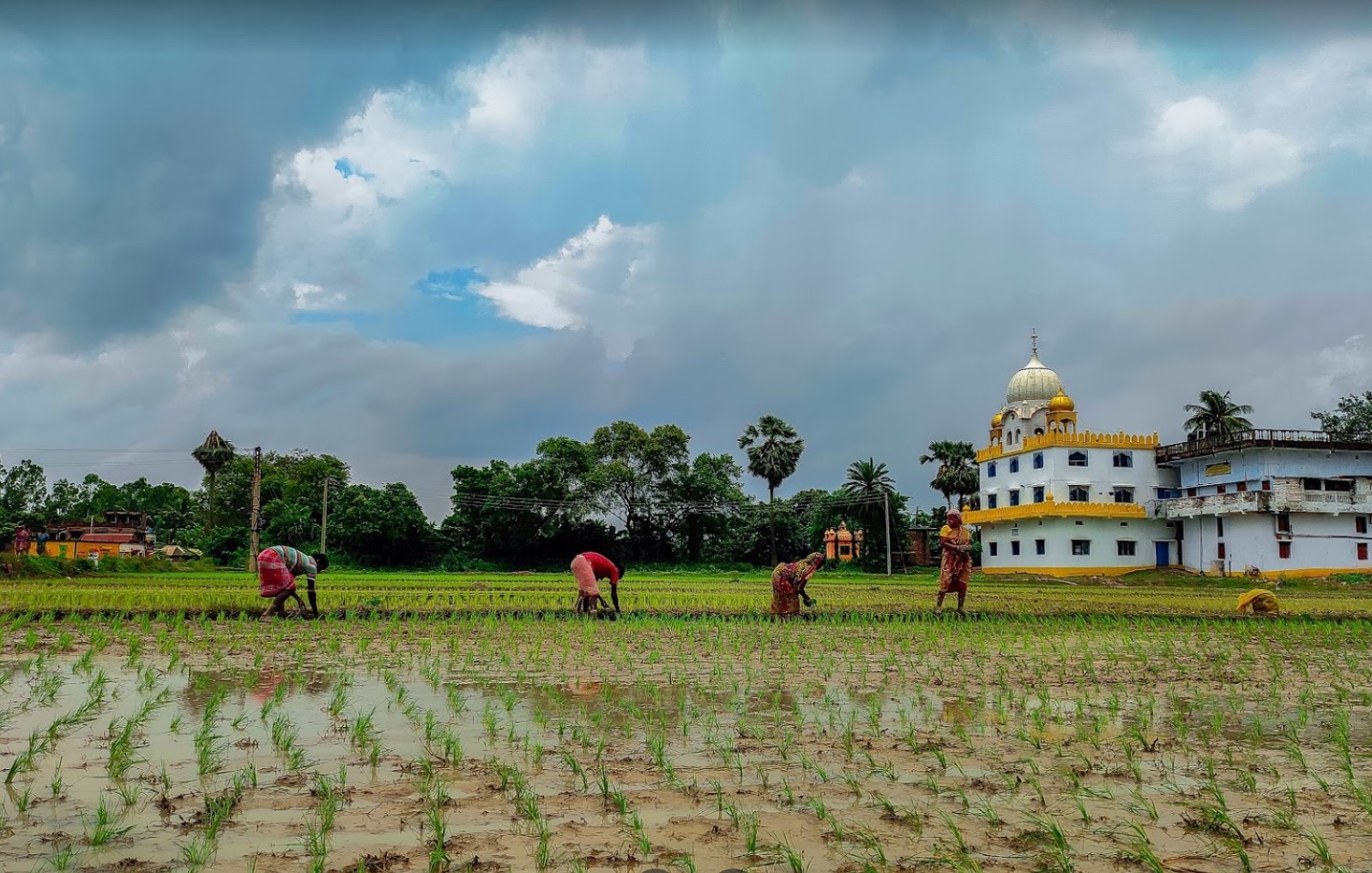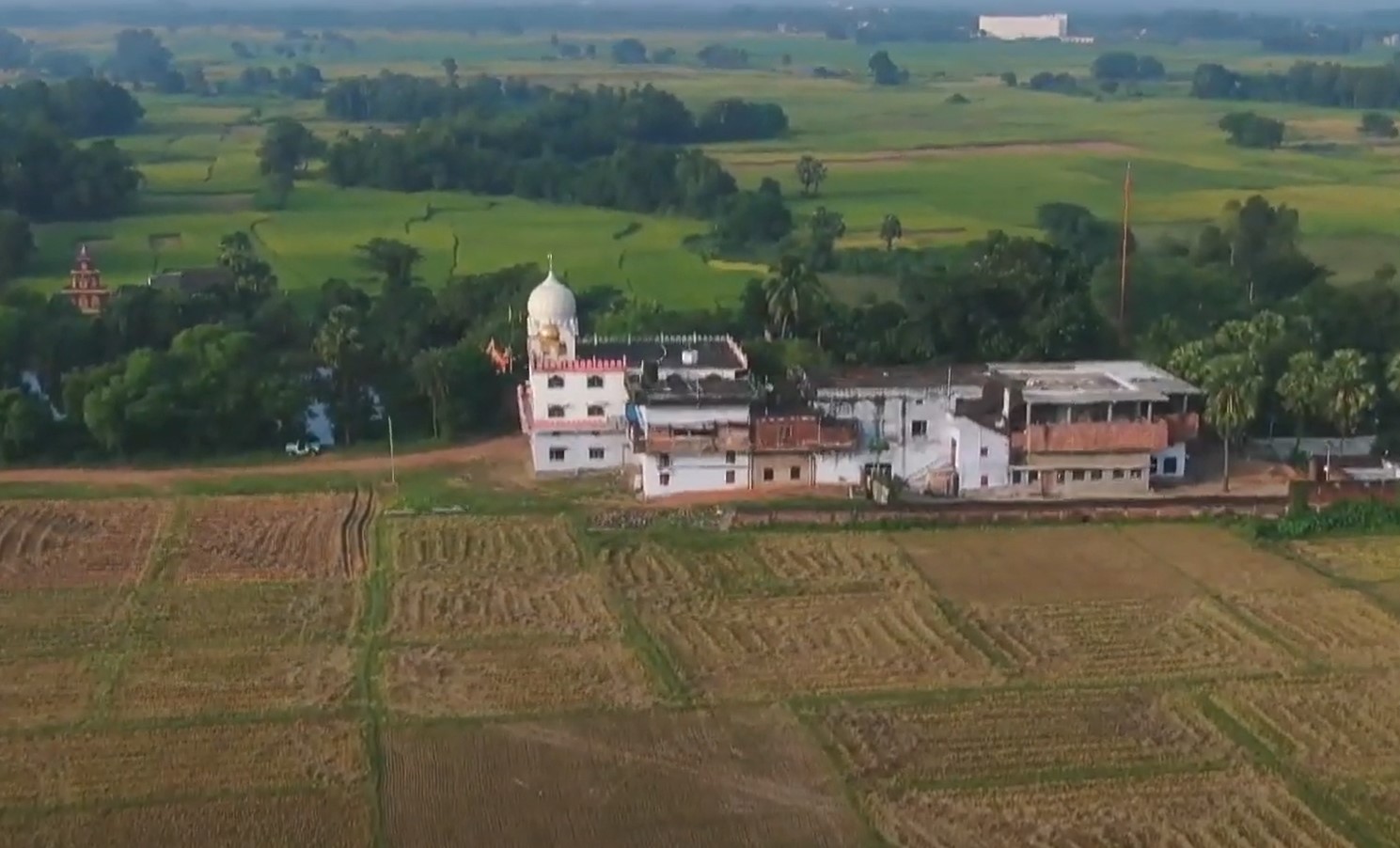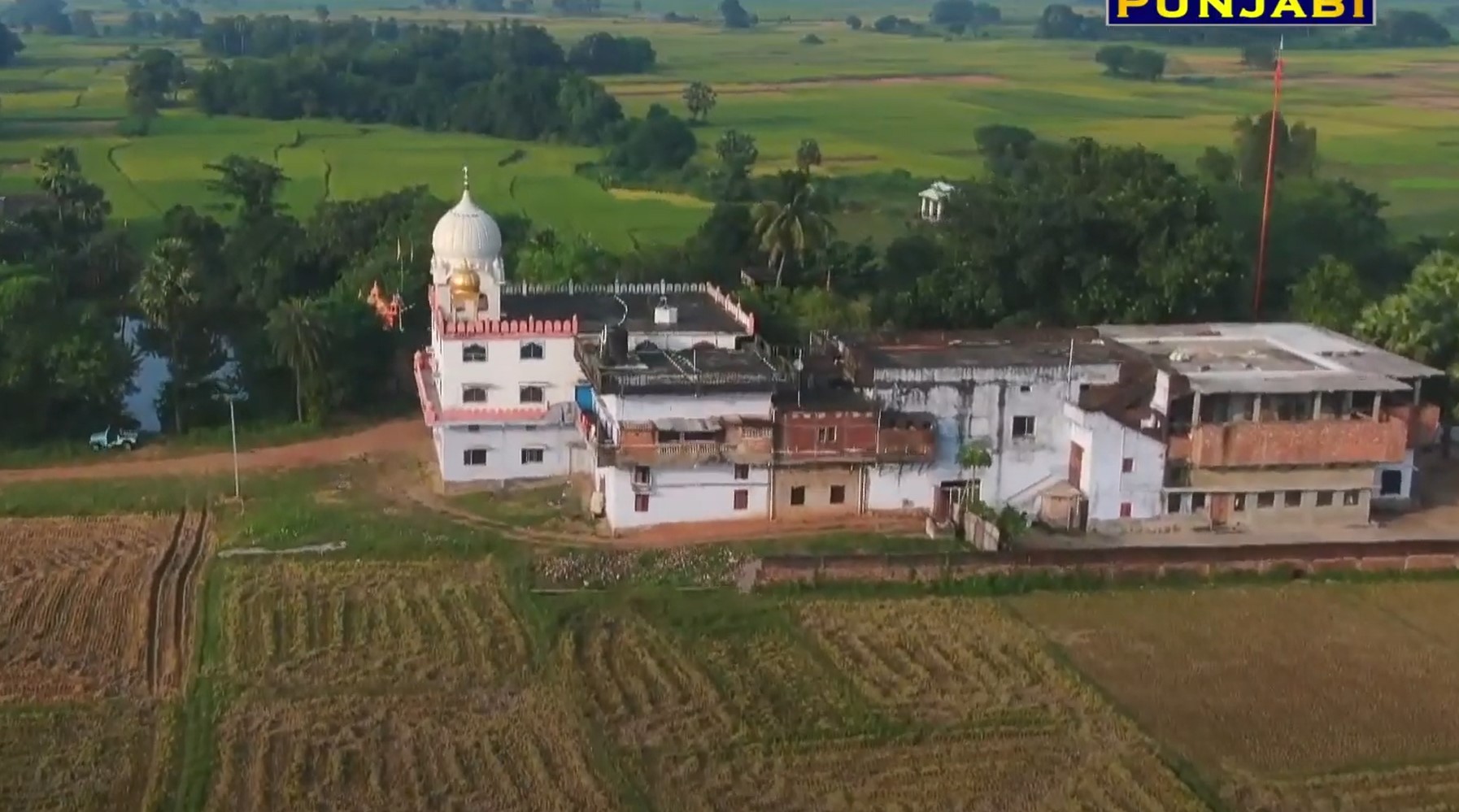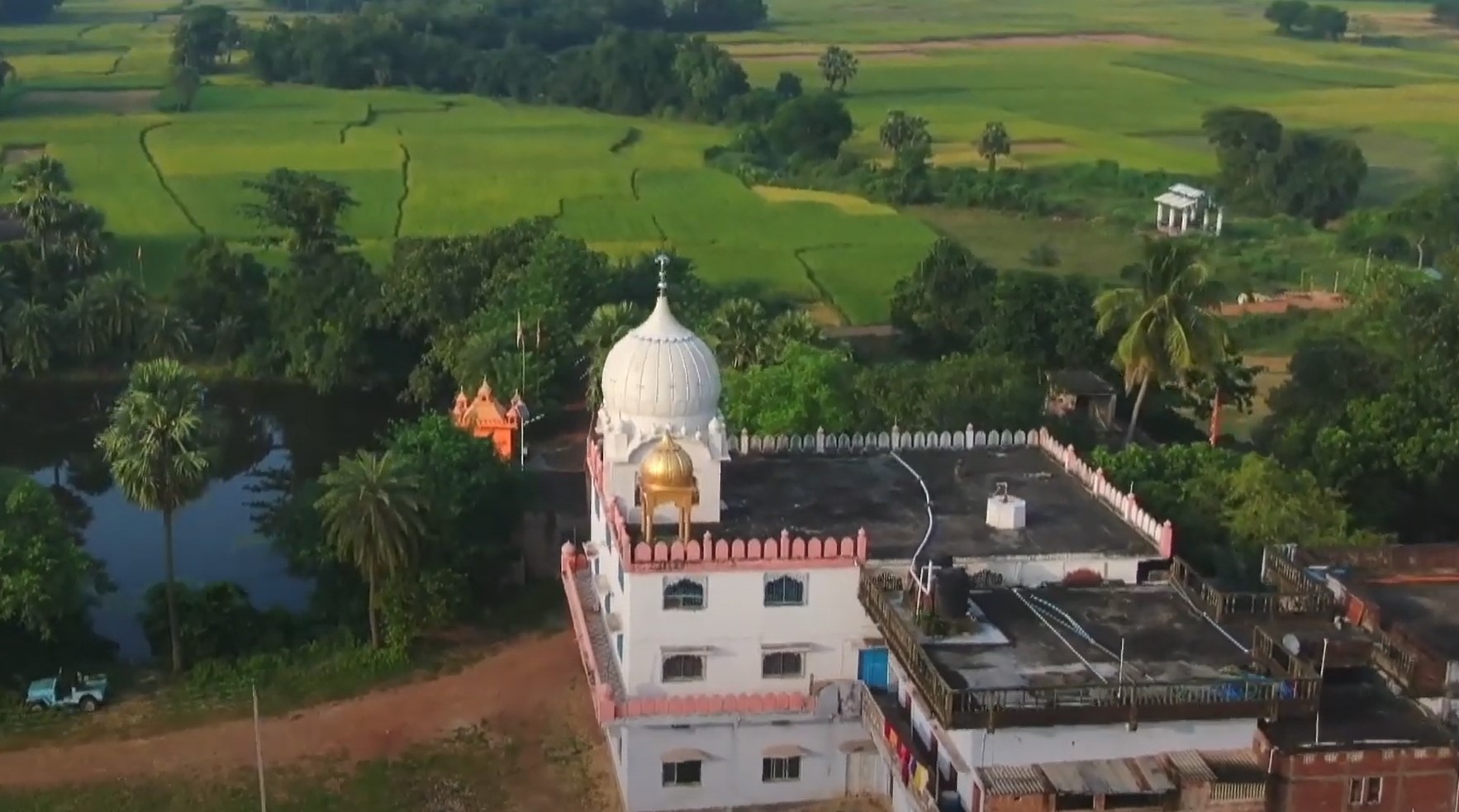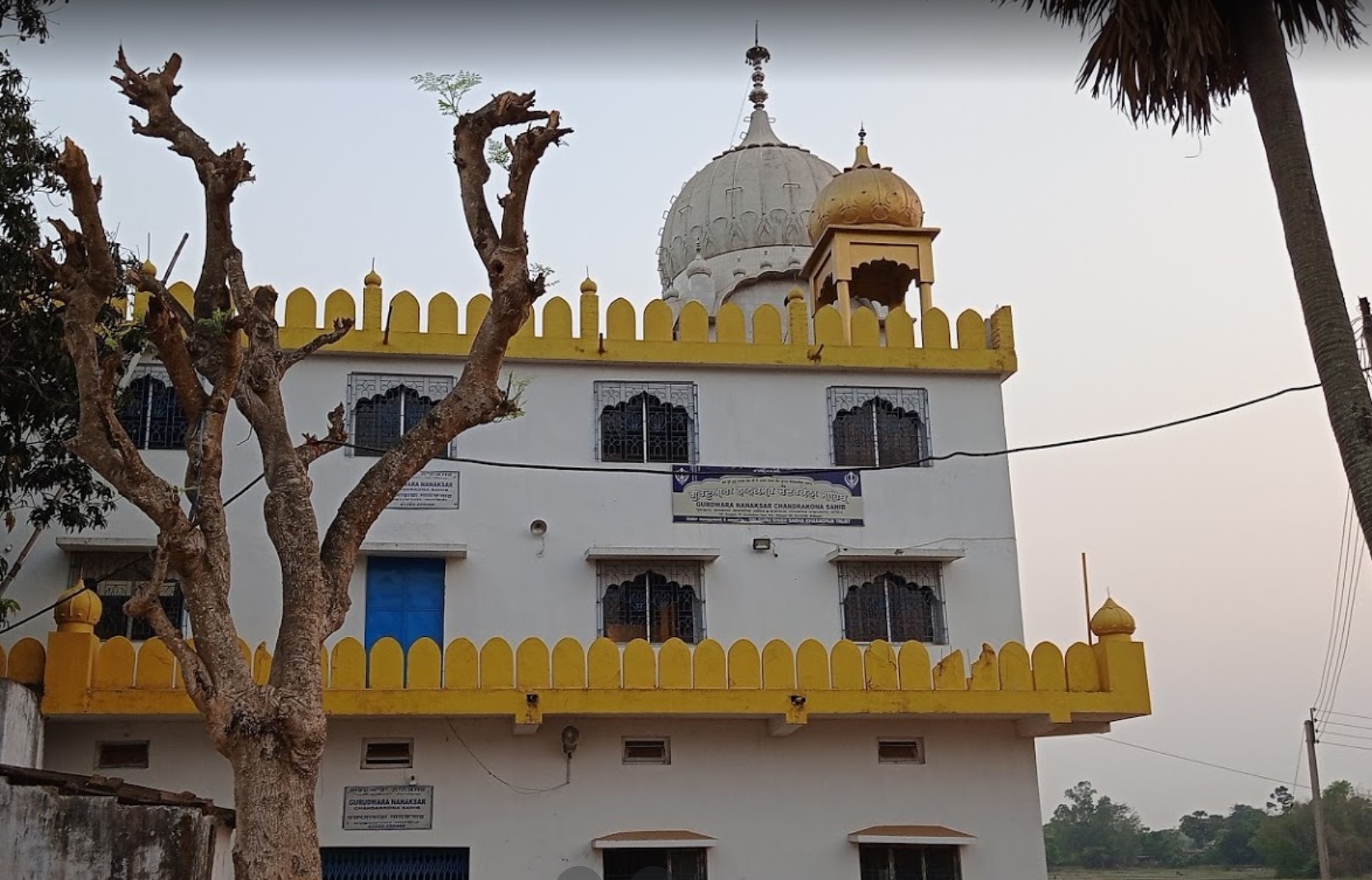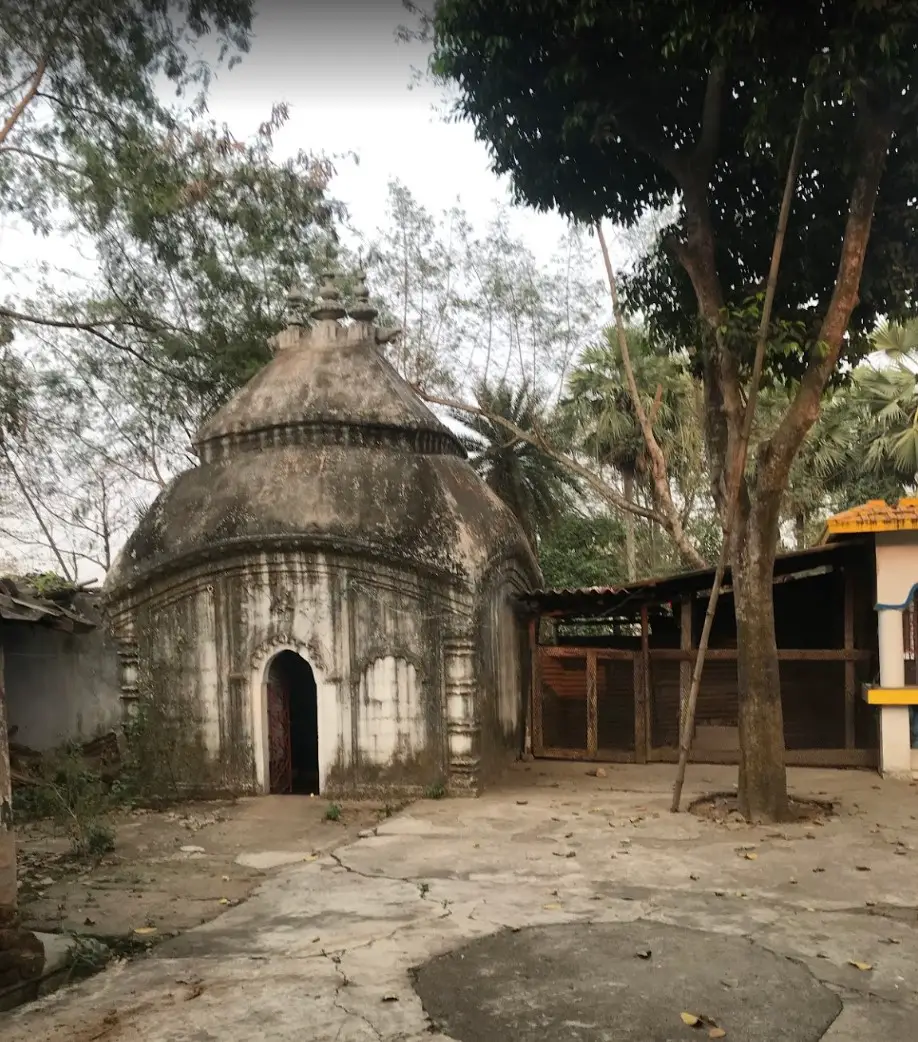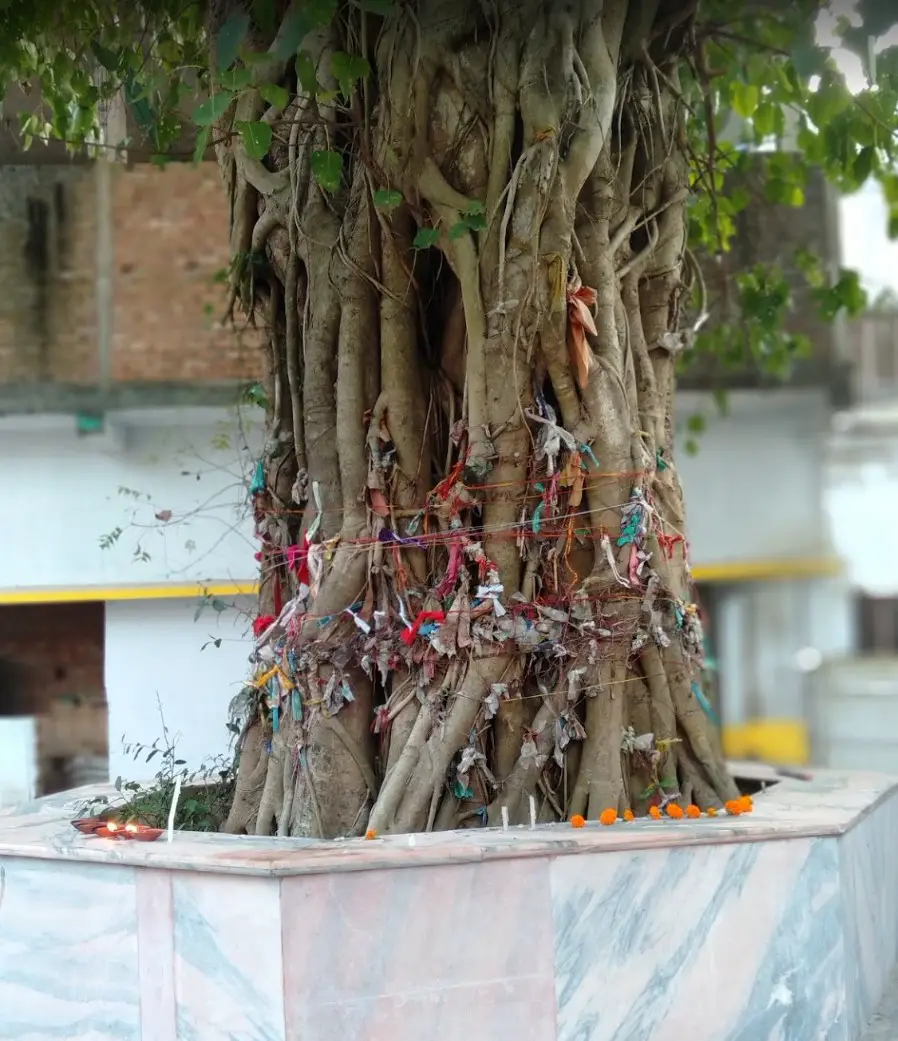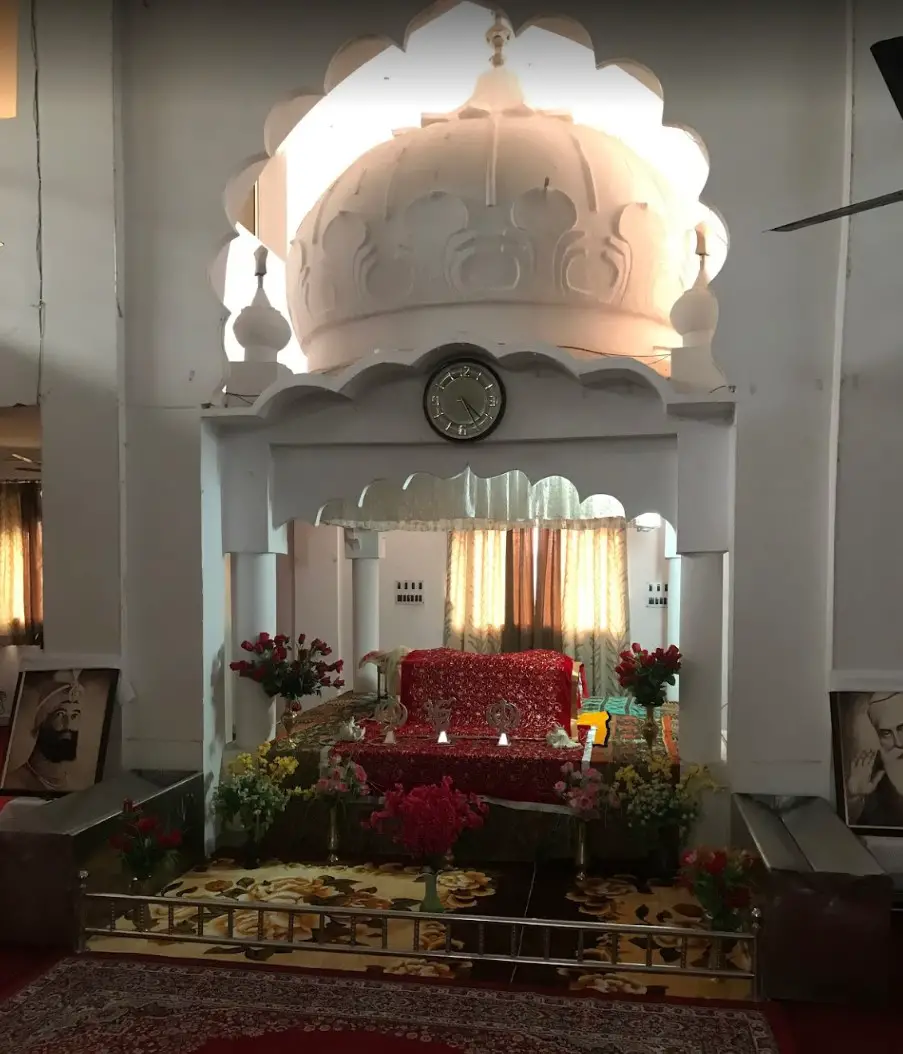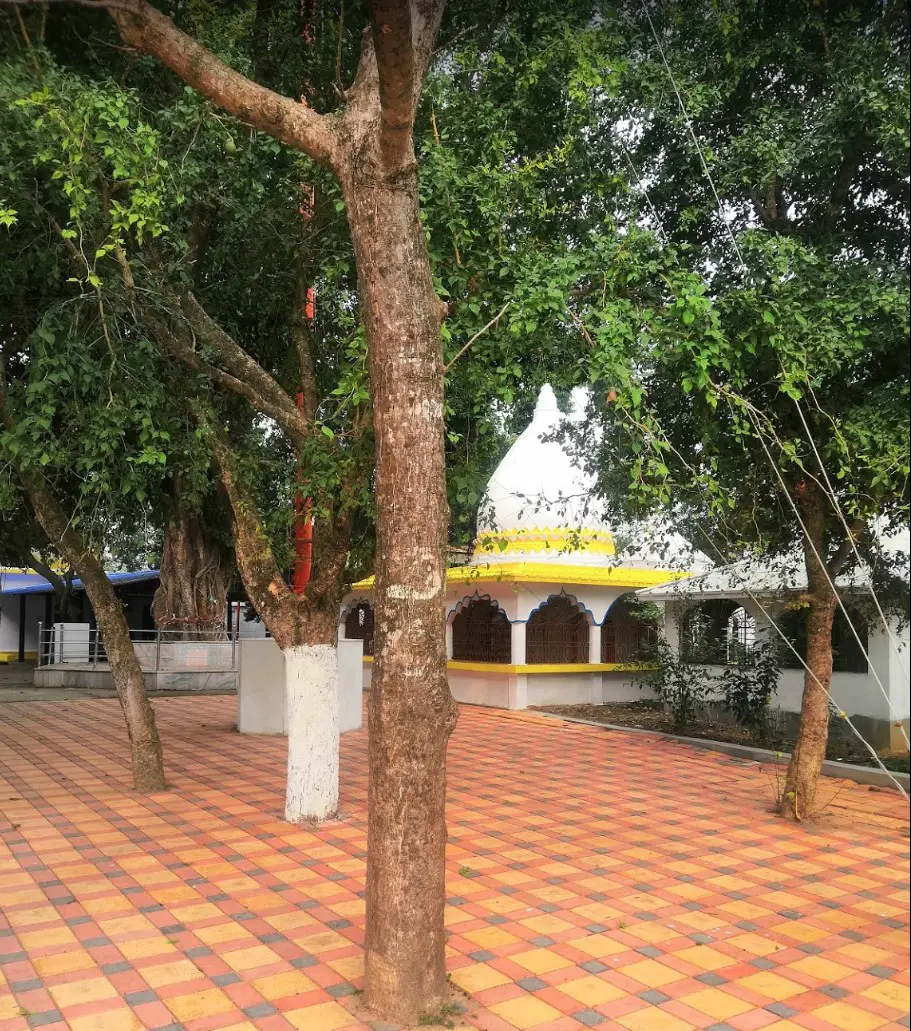Guru Nanak Darbar – Chandrakona
This Holy place has been recently discovered in 1996. This is a historic place where Sri Guru Nanak Dev visited while his visit to Assam. This has became very popular Gurudwara in East Indian Sikh community due to its historic importance. It was unknown to the community till 1995 when the Hindu caretaker disclosed the history of Guruji`s visit to this place. Since then the place grown rapidly and a beautiful Gurudwara Sahib has been built at the place.
Beleived to be the place enroute of Sri Guru Nanak”s visit to Cuttack, Puri, Orissa. India. Where he changed the girl to a Rajkumar. Child of Chandra Katu Rai the then king of this place was child less. With Guru ji’s blessing he got a child but a girl. But the King brought her up as a Rajkumar as per the blessing of Guru Nanak Dev ji.
The land of Chandrakona was blessed by lotus feet of Dhan Dhan Sri Guru Nanak Sahib Ji Maharaj in around 1510 A.D. It is believed that Bhai Mardana Ji and Bhai Bala Ji, both, had accompanied Guru Sahib to this place when they were on their way to Puri-Jagannath Temple. Though, in present time, this land (or town) is popularly known as Chandrakona but in olden time it was also known by the name “Mana”. Prior to that it may have different names depending on the ruling Kings or dynasty of their times.
Today, Chandrakona town comes under the West Medinipur district in the state of West Bengal, India. It is around 50 km away from Kharagpur (a town famous for IIT-Kharagpur) and around 170 km away from Calcutta. It is a small town and is slowly growing with the advent of modern technologies. But majority of the neighboring area is forest with small small villages spread around it. Agriculture remains the main occupation and majority of the people are lower middle class farmers.
There are many Sakhis and Kautaks associated with this mystical land of Chandrakona but Sangat should take these Sakhis with a pinch of salt. There is almost no documented evidence and all such Sakhis have been passed on from generation to generation in the form of narrations. Sometime Sikhs give extra twist, turns & glorification to the Sakhis just out of love for their Gurus. With that being said, a serious research is definitely needed to dig out the correct information regarding Guru Sahib’s visit in Chandrakona. Probably, some historians during Mughal rule would have recorded this history in Arabic or Sanskrit or some other local language like Bengali.
Until the year 1995, the present day Sikhs had no information or clue regarding the visit of Guru Sahib in this land of Chandrakona. The history has it that Guru Sahib had established Manji in Chandrakona and till 1995 it was been taken care by a Hindu family and villagers of Chandrakona. It was in 1995 that some of these family members and villagers went to Calcutta and brought it to the notice of Calcutta Gurdwara Prabandhak Committee. They requested, that going forward, the Sikhs should take over the responsibility of managing this historical place.
In no time this auspicious news quickly spread far and wide. The Sikh Sangat living within the few hundred kilometers, of Chandrakona, in cities like Sri Patna Sahib, Jamshedpur (Tatanagar), Ranchi, Hazaribagh, Dhanbad, Durgapur etc… started visiting Chandrakona. Within few months, with Guru Sahib’s Kirpa and enthusiasm of Sikh Sangat, the Chandrakona Gurdwara Sahib came into existence. Initially a small building with pillars and concrete slab was erected to do Prakash of Sri Guru Granth Sahib Ji. The kitchen and hall for Langar were also prepared. There was a pond in the vicinity which was converted to Sarovar.
At that time, in year 1995-96, there were very few native farmer families living in the vicinity where the Gurdwara Sahib was built. Rest of the villagers were spread far and wide. They were very welcoming to the Sikh sangat and would do seva in every manner according to their capacity. I remember, as a result of recent discovery of this place, the Sikh Sangat used to arrive in large numbers. The native villagers never objected when Sikhs parked the 4-wheelers, buses, trucks and other vehicles in their agricultural farmlands. There was no infrastructure and when vehicles used to leave, their farmlands were left in big mess. But still they never complained and always welcomed with a smile.
Till recent time this place remained very backward. There were no metalled roads in the villages of this land and all were muddy roads. The national highway was around 30-50 km far away. Sikh sangat with the help of local villagers were able to make stiff muddy road so that 4-wheelers and other vehicles could ply. But the transportation was still slow for this 50 km stretch. I am sure, in last two decades the infrastructure would have become much better. Every month, on pooranmashi or sangrand the sangat used to arrive in big numbers and do kirtan samagams. I guess same might be the trend nowadays also. It is my belief that sangat would have expanded the Gurdwara Sahib premises and would have also made Yatri Niwas by this time.
The main Sakhi that is associated with Chandrakona is that, the King of Ketu dynasty by the name Chandraketu Rai was ruling when Guru Sahib visited this place. The King Chandraketu had a girl child and was worried about his future ruler. He requested Guru Sahib to do some Kirpa on his kingdom. So as a solution to Chandraketu’s worry, Guru Sahib changed the girl child to Rajkumar. There are different versions of this Sakhi. One version says, Chandraketu was childless so he asked for blessing of child. Guru Sahib gave blessing and moved ahead to Puri-Jagannath. When Guru Sahib returned from Puri, the Chandraketu said the child is girl. Guru Sahib said you did not specified that you want a boy child. So as a result Guru Sahib transformed the child to Rajkumar.
It is said that Guru Sahib did lot of bhajan bandagi sitting under a particular banyan tree for several days. This banyan tree is where the present day Gurdwara Sahib is built. This mystic banyan tree bears leaves of several variety.
Apart from relevance to Sikh history, Chandrakona had been land of mysticism. There is unconfirmed belief among few people that in earlier yugs Sri Ram Chandra Ji along with Laxman and Sita Ji had visited this place. There are a lot of different varieties of temples in this land and it’s neighboring area. The temples have various architectural patterns which signifies that different dynasties have ruled this land and it was centre with lot of religious activities. This land is under the region of Bengal which was once a big center of bhagti movement. The Rishi munis and yogis had done lot of jap-tap in their times in this land.
The best way to reach Chandrakona Gurdwara Sahib is to first reach Kharagpur. Then take taxi from Kharagpur to Chandrakona Gurdwara Sahib, this distance is about 40-50 km and may take approx 1-2 hrs depending on road conditions. The Kharagpur railway station is very well connected with Northern (Delhi), Western (Mumbai), Central (Nagpur), Southern (Chennai) and Eastern (Howrah) Indian Railways. Mostly any train that is going towards Howrah (Calcutta) Railway Station will pass through Kharagpur. Trivia – Till recent time Kharagpur had the longest railway platform in the world. It is also famous for IIT-Kharagpur, from where Kejriwal passed out 😛
If someone wish to go by air then they have to take flight to Calcutta Airport. From there take train to Kharagpur or hire taxi directly to Chandrakona Gurdwara Sahib (which anyway will use national highway crossing Kharagpur).
